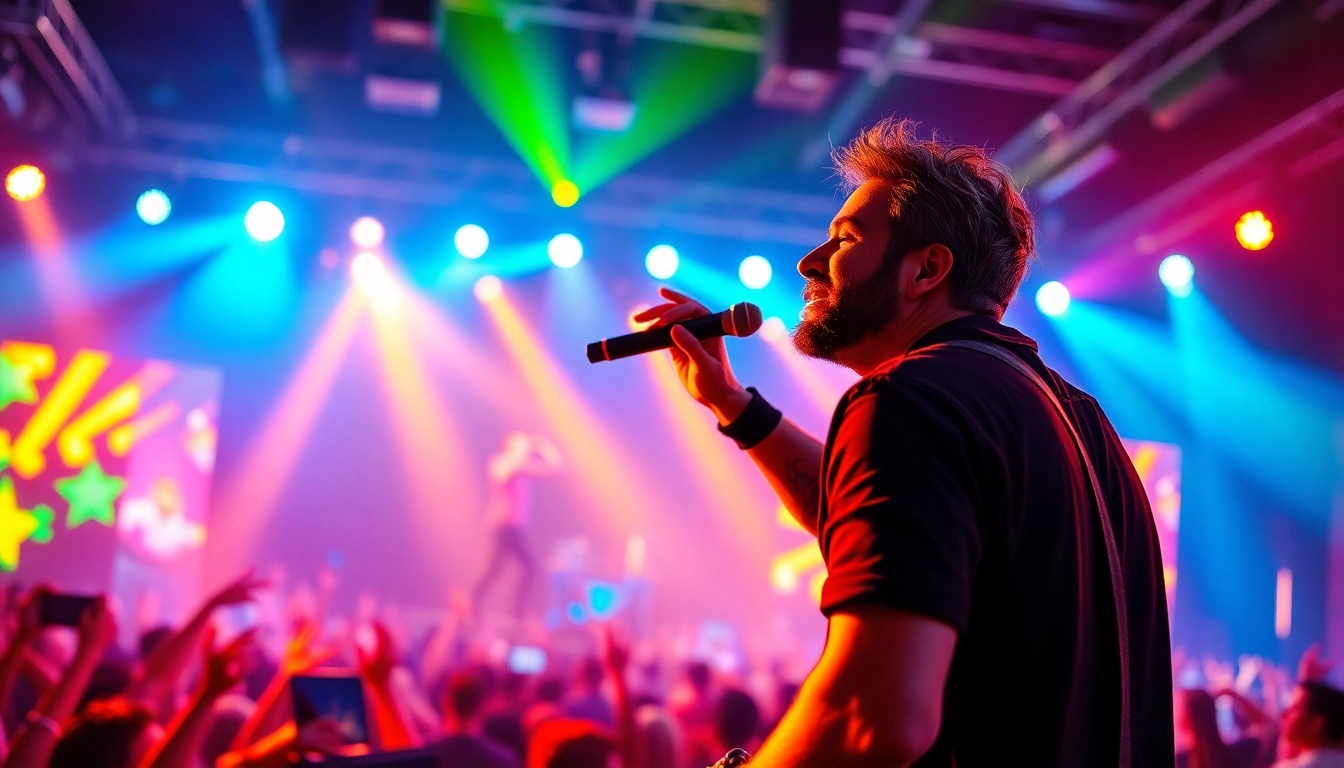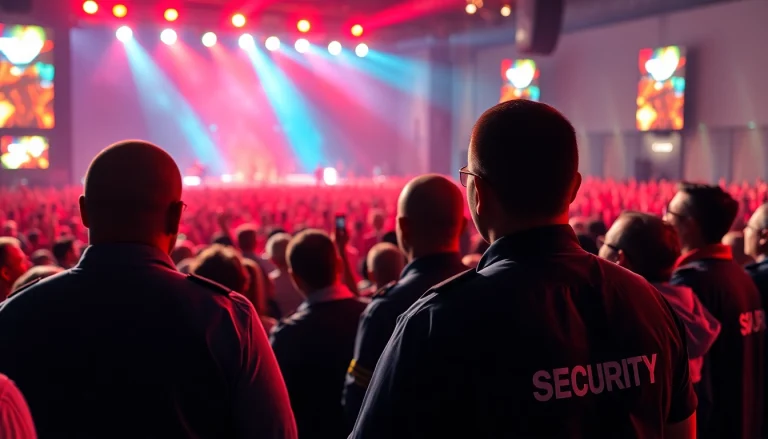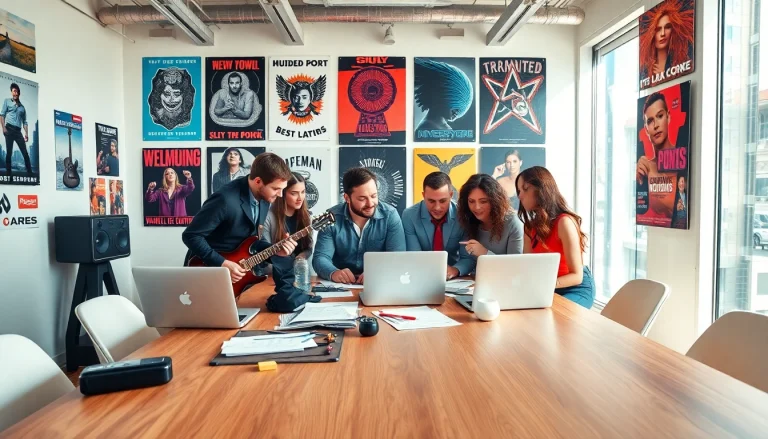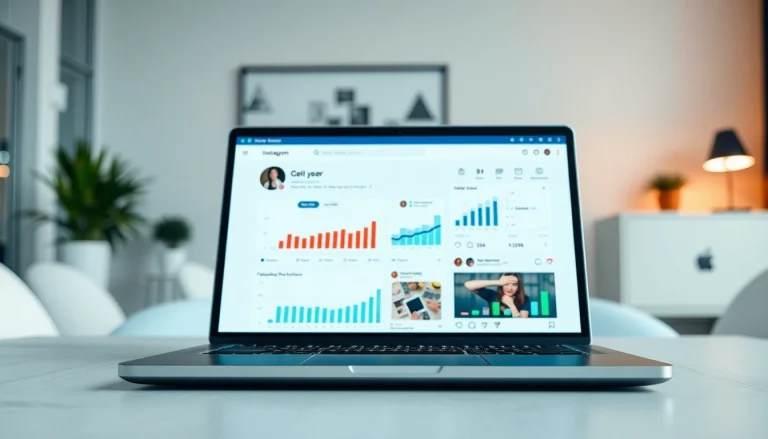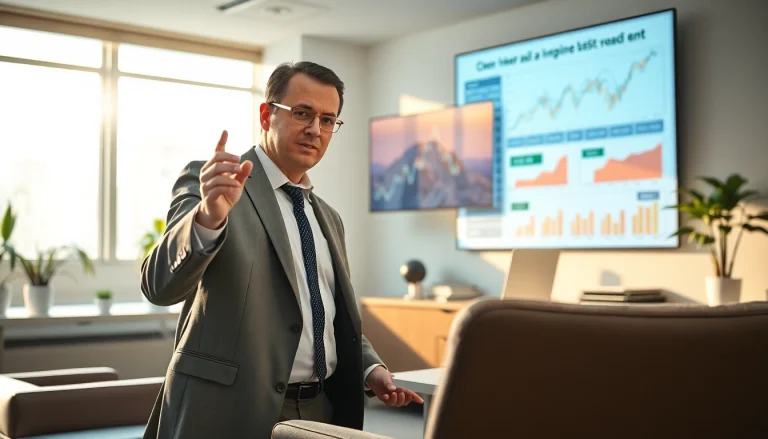Understanding the Basics of Touring
What is Touring and Why It Matters
Touring is a fundamental aspect of a musician’s career, encompassing live performances across various locations to showcase their work to different audiences. While studio recordings provide the backbone of an artist’s discography, touring brings an entirely different dynamic to an artist’s relationship with their fans. Touring matters because it not only generates income but also solidifies an artist’s presence in the music industry. For many fans, seeing their favorite artists live is a pivotal experience that fosters loyalty and emotional connection.
Moreover, touring serves as a platform for artists to promote their new releases and to engage directly with their audience. As more artists explore touring as a strategic tool in their branding and marketing initiatives, understanding its nuances becomes critical to achieving success.
Key Components of a Successful Tour
A successful tour is built on several key components, each essential for ensuring a smooth execution and positive reception. These components include:
- Strategic Planning: Proper planning encompasses everything from the timing of the tour to the selection of venues and promotional strategies.
- Marketing and Promotion: Effective marketing campaigns, robust social media presence, and engaging promotional materials play a vital role in generating interest and ticket sales.
- Logistics: Understanding transportation needs, accommodating the band and crew, and managing overall tour logistics can make or break the success of the tour.
- Audience Engagement: Connecting with the audience during performances fosters loyalty and can lead to repeat attendance at future shows.
How Touring Impacts Artist Branding
Touring significantly influences an artist’s brand perception and marketability. A well-executed tour can elevate an artist’s status, enhancing their reputation in the industry and among fans. Every performance offers an opportunity for artists to express their musical identity, share their stories, and build emotional connections with their audience.
Additionally, touring provides artists with valuable exposure to diverse audiences, enabling them to expand their fan base beyond local confines. The way an artist engages with fans during a show—whether that’s through heartfelt interactions, special performance elements, or memorable on-stage personas—plays a crucial role in how they are perceived long after the tour ends.
Planning Your Touring Itinerary
Researching Ideal Locations for Touring
When planning a tour, identifying the right locations is paramount. Artists should research cities and venues that resonate with their music style and target demographic. Understanding local culture, audience preferences, and venue capacities can yield valuable insights into where to prioritize tour stops.
Engaging with local fan bases—through social media and other platforms—can gauge interest levels in different areas. Additionally, utilizing tools like ticket sales analytics and demographic data can inform location choices and optimize potential attendance.
Understanding Venue Capacities and Layouts
Not all venues are created equal; each offers distinct characteristics that can influence the performance experience. Artists and their teams must assess venue capacities to ensure they select the right fit for their expected audience size. Factors such as stage layout, acoustics, and audience sightlines will significantly impact the overall concert experience.
Moreover, artists should consider the technical requirements of their performances when selecting venues. Lighting, sound systems, and backstage facilities can vary wildly from one venue to another, making it essential to choose locations that align with an artist’s specific needs.
Scheduling Dates for Maximum Attendance
Timing is everything when it comes to touring. Artists must strategically schedule their tour dates to maximize attendance. Considerations such as local events, holidays, and other concerts occurring nearby can affect audience turnout. For instance, weekends and holidays typically attract larger crowds, while weekdays may yield lower attendance.
Analyzing previous tours can help identify optimal dates. Additionally, involving local promoters who understand the area can provide insight into when to avoid heavy competition or low energy periods.
Marketing Your Tour Effectively
Utilizing Social Media for Tour Promotion
With a vast array of platforms available, social media has become an indispensable tool for tour promotion. Artists can leverage channels like Instagram, Twitter, and Facebook to engage with fans, share tour updates, and create buzz around upcoming shows. Regular posts about ticket releases, behind-the-scenes content, and personalized messages can generate excitement and anticipation.
Moreover, paid advertising on social media can help expand reach, targeting specific demographics interested in certain genres or local areas. Utilizing analytics to measure engagement and effectiveness allows artists to refine their promotional strategies continuously.
Creating Engaging Promotional Material
Promotional material should reflect an artist’s brand identity. Eye-catching graphics, compelling videos, and vibrant imagery can enhance the appeal of promotional communications. This material should be consistent across all platforms while catering to the unique features of each channel. For example, shorter videos might perform well on TikTok, while longer, more detailed content would be better suited for platforms like YouTube.
Additionally, artists should consider using merchandise as a promotional tool. Exclusive tour-related items not only enhance the experience for attendees but can also act as a marketing tool when worn or displayed by fans.
Collaborating with Influencers and Media
Partnering with influencers and media outlets can significantly amplify an artist’s reach. Influencers can provide authentic endorsements that resonate with their followers, while media outlets can enhance visibility through coverage and interviews. Reaching out to local bloggers, music journalists, and podcast hosts for collaborations can broaden an artist’s exposure prior to the tour.
Furthermore, organizing press releases and media events can generate buzz, providing essential opportunities for artists to share their stories and engage with journalists. Cultivating these relationships can create ongoing support for future projects beyond the current tour.
Logistical Considerations for Tours
Transportation and Accommodation Needs
The logistics of transportation and accommodation are crucial. Artists must calculate travel distances, transportation costs, and accommodation needs for the entire team, including band members, roadies, and other support staff. Understanding the geography of the tour route can streamline logistics and minimize stress during travel.
Additionally, booking accommodations in advance is essential to secure comfortable and budget-friendly options. Considerations such as proximity to venues, safety, and overall hospitality should guide lodging choices.
Catering to Your Team and Band Members
An often-overlooked aspect of touring is the well-being of the team. Catering to band members and crew can significantly influence morale and performance quality during the tour. Providing adequate meals, rest periods, and a comfortable working environment fosters a collaborative atmosphere.
Artists should also build contingency plans for unforeseen events. Whether it’s equipment failure or illness among band members, having a plan in place ensures that the show can go on, maintaining the quality and integrity of the tour.
Managing Tour Finances and Budgets
Financial management is an essential component of successful touring. Artists should establish comprehensive budgets that cover various aspects, including venue costs, travel expenses, accommodation, equipment rental, and promotional activities. Keeping detailed records and utilizing budgeting tools can prevent overspending and ensure profitability.
Additionally, understanding ticket pricing strategies and potential revenue streams—such as merchandise sales and sponsorship deals—can enhance financial stability. Regular evaluations of financial performance throughout the tour can help identify areas for improvement and inform future budgeting practices.
Analyzing Tour Performance
Tracking Attendance and Revenue Metrics
Measuring the success of a tour involves tracking attendance and revenue metrics. Sales data, such as ticket sales and merchandise revenue, can provide insights into audience engagement and overall financial performance. Analyzing this data helps artists understand the direct impact of their promotional efforts and performance quality.
Ongoing monitoring throughout the tour allows for real-time adjustments to marketing strategies and logistical decisions based on performance metrics.
Gathering Audience Feedback for Improvement
Feedback from attendees presents valuable insights into an artist’s performance and tour experience. Artists can utilize post-show surveys, social media interactions, and direct feedback channels to gauge audience reactions. Positive feedback can reinforce successful strategies, while constructive criticism provides an opportunity for growth and enhancement.
Engaging with audiences post-tour—through emails, social media posts, and fan forums—can foster a continued relationship and commitment to improvement for future tours.
Leveraging Results for Future Touring Strategies
Finally, artists should leverage insights gained from this tour when planning future endeavors. Learning from successes and challenges equips artists with the knowledge needed for more effective tour strategies going forward. Whether it involves improved planning, better financial management, or enhanced audience engagement, as lessons are learned, they should be documented and applied to ensure continued growth within the industry.
By analyzing data, consolidating feedback, and continually improving touring strategies, artists can ensure their place in the music landscape and create enduring connections with audiences around the world.
